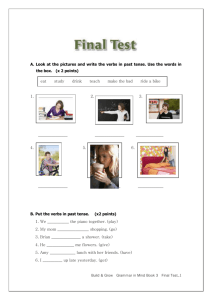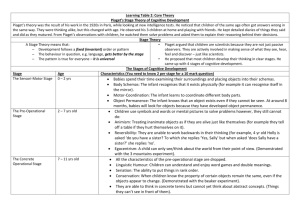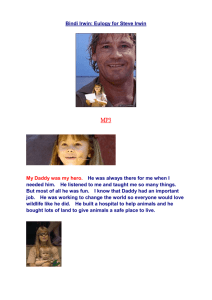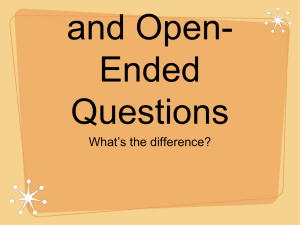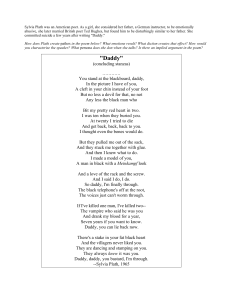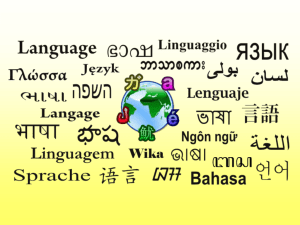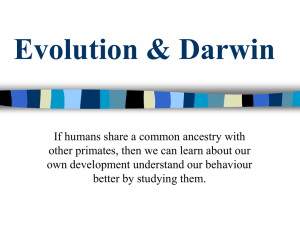Slide 1
advertisement
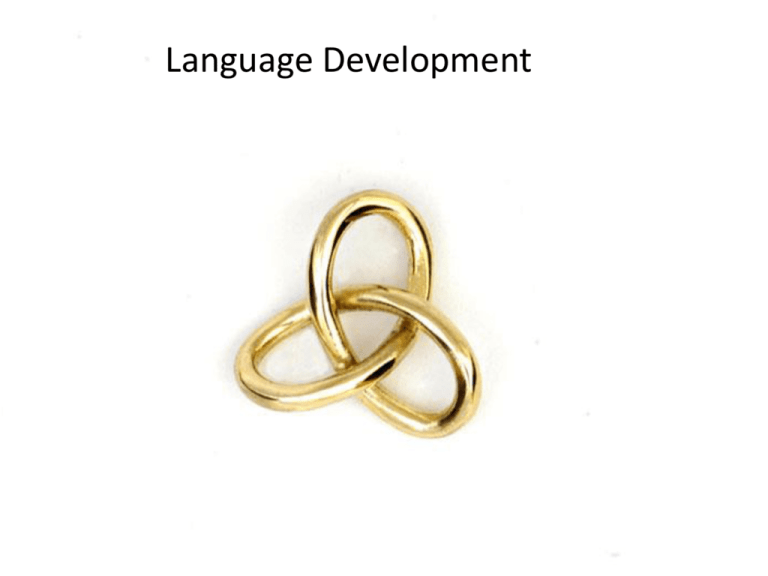
Language Development Observation: Chimps will look for a toy or piece of food that has disappeared. Knowledge: Children do that at around two years of age. Thought: Maybe chimps can develop mentally/intellectually at least as far as a 2 year old. Question: Can chimps be taught to “talk” or use language? Washoe (Gardner, Allen & Beatrice) at 3 ½ years used 87 signs at 5 years, used more than 160 Steps in Learning a Language: 1.Learn to make signs. 2.Learn the meaning of the signs. 3. Learn grammar to combine signs. • Crying gradually lessens • Cooing begins • Coos develop into babble • Babble begins to replicate familiar sounds. • The leap to using sounds as symbols occurs early in the second year. • First attempts are primitive and only approximate. • The first real words usually refer to things infants can see or touch. They are often labels or commands. • By the end of the second year, children have a vocabulary of 500 to 1500 words. They begin to express themselves more clearly by joining words into twoword phrases. • From 18 months to 5 years, children add roughly 5 to 10 words to their vocabulary each day. • Grammatically, though, children use telegraphic speech. Early Grammar Acquisition Telegraphic Speech: They leave out words or get the verb tense wrong, etc., but they still make themselves understood. Brown, 1973. Early Grammar Acquisition Imitation: Daddy went yesterday. Overgeneralization: Daddy goed yesterday. Rule-governed: Daddy went yesterday. Cognitive Development Jean Piaget 1896-1980 A Different Way One Way Schema A conceptual framework a person uses to make sense of the world. Operations Mental transformations or manipulations that occur in the mind. Operations can only develop as the brain develops. Assimilation X Accommodation Assimilation: The process of fitting objects and experiences into one’s schemas. Accommodation: The process of adjusting one’s schemas to include newly observed events and experiences. Object Permanence A child’s realization that an object exists even when he or she can’t see or touch it. Representational Thought The intellectual ability of a child to picture something in his or her mind. Conservation Principle that a given quantity does not change when its appearance is changed. Piaget’s Stages of Cognitive Development Sensorimotor (0 to 2 years) Behavior consists of simple motor responses to sensory input; lacks concept of object permanence Preoperational (2 to 7 years) Lacks operations (reversible mental processes); exhibits egocentric thinking; lacks concept of conservation; uses symbols (words, mental images) to solve simple problems or to talk about things that aren’t present Concrete Operations (7 to 11 years) Begins to understand and eventually masters the concept of conservation; still has trouble with abstract ideas; classification abilities improve Formal Operations (11 years & onward) Understands abstract ideas and hypothetical situations; capable of logic and deductive reasoning; figurative language
